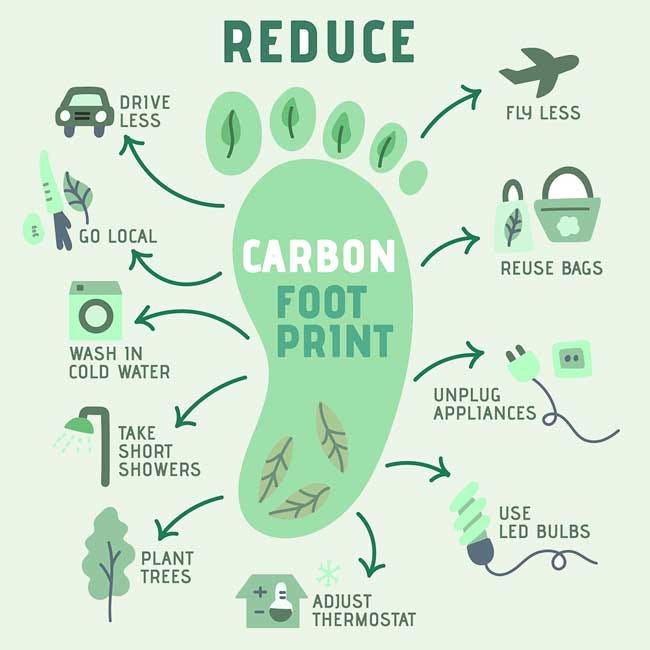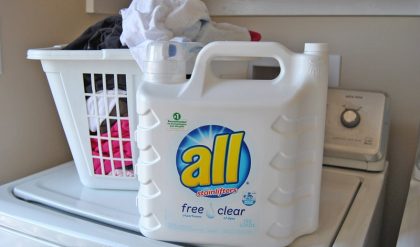
The Eco-Friendly Home: 10 Sustainable Swaps for a Greener Lifestyle
Our homes, while offering comfort and security, often leave a significant carbon footprint. But what if we could transform our living spaces into havens of sustainability, contributing to a healthier planet without sacrificing comfort or style? This isn’t about radical overhauls; it’s about conscious choices, smart swaps, and a commitment to a greener lifestyle. Let’s explore ten simple yet impactful changes you can make today.
1. Ditch the Disposable: Embrace Reusable Bags and Containers
The ubiquitous plastic bag is a symbol of our throwaway culture. Swapping to reusable shopping bags made from durable materials like canvas or recycled fabrics is a no-brainer. Extend this eco-conscious approach to food storage. Replace cling film and single-use plastic containers with reusable glass or stainless steel alternatives. These simple swaps drastically reduce plastic waste and contribute to a cleaner environment.
2. Power Down: Energy-Efficient Appliances and Lighting
Our homes consume a significant amount of energy. Investing in energy-efficient appliances, marked with an Energy Star rating, can dramatically reduce your electricity bill and carbon emissions. LED lighting uses significantly less energy than incandescent bulbs and lasts much longer, resulting in both cost and environmental savings. Remember to turn off lights and appliances when not in use – a small habit with a big impact.
3. Water Wise: Low-Flow Fixtures and Smart Watering
Conserving water is crucial for environmental sustainability. Installing low-flow showerheads, faucets, and toilets can drastically reduce your water consumption without compromising water pressure. For your garden, consider water-wise landscaping techniques, such as using drought-tolerant plants and installing a smart irrigation system to optimize water usage. Every drop saved counts.
4. Clean Green: Eco-Friendly Cleaning Products
Conventional cleaning products often contain harsh chemicals that are harmful to both our health and the environment. Transition to plant-based, biodegradable cleaning products. Many effective and safe cleaning solutions can be made at home using simple ingredients like vinegar and baking soda, minimizing chemical waste and promoting a healthier home environment.
5. Sustainable Textiles: Choose Organic and Recycled Fabrics
The textile industry is a significant polluter. When purchasing clothes, bedding, or towels, opt for organic cotton or recycled materials. These choices reduce the environmental impact associated with conventional textile production, such as pesticide use and water pollution. Supporting sustainable brands makes a tangible difference.
6. Compost Your Waste: Reduce Landfill Contributions
Food waste contributes significantly to greenhouse gas emissions. Start composting your food scraps and yard waste. Composting reduces landfill waste and creates nutrient-rich soil for your garden, creating a closed-loop system that minimizes environmental impact. Even a small compost bin can make a difference.
7. Conscious Consumption: Buy Less, Choose Quality
Our consumer habits significantly impact the environment. Practice mindful consumption by buying less and choosing high-quality, durable items over cheap, disposable products. Prioritize quality over quantity, leading to less waste and a smaller environmental footprint.
8. Insulate Your Home: Reduce Energy Loss
Proper insulation is key to energy efficiency. Ensure your home is adequately insulated to minimize energy loss through walls, roofs, and windows. This reduces your reliance on heating and cooling systems, lowering energy bills and carbon emissions.
9. Recycle and Repurpose: Give Items a Second Life
Recycling and repurposing items extend their lifespan and reduce the demand for new materials. Familiarize yourself with your local recycling guidelines and creatively repurpose items before discarding them. This mindful approach helps minimize waste and conserves resources.
10. Support Eco-Conscious Businesses: Vote with Your Wallet
Support businesses that prioritize sustainability. By choosing eco-friendly products and services, you encourage responsible practices and contribute to a more sustainable marketplace. Your purchasing power is a powerful tool for change.
Sustainable Swaps at a Glance:
| Item | Unsustainable Choice | Sustainable Swap | Benefit |
|---|---|---|---|
| Shopping Bags | Plastic | Reusable Canvas/Fabric | Reduces Plastic Waste |
| Lighting | Incandescent Bulbs | LED Bulbs | Energy Savings, Longer Life |
| Cleaning | Harsh Chemical Cleaners | Plant-Based Cleaners | Healthier Home, Eco-Friendly |
| Food Storage | Plastic Wrap/Containers | Glass/Stainless Steel | Reduces Plastic Waste |
| Textiles | Conventional Cotton | Organic Cotton/Recycled | Reduces Environmental Impact |
Embracing eco-friendly practices in your home isn’t about perfection; it’s about progress. Start with one or two swaps and gradually incorporate more sustainable habits into your daily routine. Every small step you take contributes to a healthier planet and a more sustainable future.

Additional Information
Deep Dive: Analyzing 10 Sustainable Swaps for a Greener Home
The concept of “10 Sustainable Swaps for a Greener Lifestyle” offers a compelling, albeit simplified, approach to eco-friendly living. While appealing for its accessibility, a deeper analysis reveals the complexities and nuances within each swap, demanding a more nuanced understanding for impactful change. This analysis explores the ten common swaps, examining their efficacy, limitations, and potential for broader systemic impact.
1. Conventional Cleaning Products to Eco-Friendly Alternatives: The shift away from harsh chemicals is crucial. Conventional cleaners often contain volatile organic compounds (VOCs), contributing to indoor air pollution and impacting respiratory health. Studies by the EPA consistently link indoor air quality to increased asthma rates and other health problems. However, the “eco-friendly” label itself needs scrutiny. “Greenwashing” is prevalent; consumers must carefully examine ingredient lists, seeking certifications like EPA Safer Choice or certifications from reputable organizations like Green Seal. Simply switching to plant-based ingredients doesn’t guarantee environmental benefit; the lifecycle impact of production and transportation must also be considered.
2. Plastic Packaging to Reusable Containers: Reducing plastic consumption is paramount. Plastic production is energy-intensive and contributes significantly to landfill waste and ocean pollution. The Ellen MacArthur Foundation estimates that by 2050, there will be more plastic than fish in the ocean if current trends continue. Shifting to reusable containers is a positive step, but the durability and lifecycle of these containers are vital. Choosing durable, high-quality materials that can withstand repeated use minimizes environmental impact. Furthermore, the practicality of complete elimination of plastic (considering food preservation needs) highlights the importance of a systems-level approach, including policy changes concerning plastic production and recycling infrastructure.
3. Disposable Water Bottles to Reusable Water Bottles: This swap directly targets single-use plastic waste. The production of plastic water bottles consumes significant resources and generates substantial pollution. However, the long-term effectiveness hinges on consistent use and proper cleaning of the reusable bottle to prevent the growth of bacteria. Promoting a culture of hydration with tap water (where safe and readily available) further enhances the environmental benefit.
4. Incandescent Bulbs to LED Lighting: The energy efficiency of LEDs significantly reduces electricity consumption, resulting in lower carbon emissions. Incandescent bulbs convert only a small percentage of energy into light, while LEDs are much more efficient, saving both energy and money. However, the manufacturing process of LEDs involves rare earth minerals, raising ethical and environmental concerns regarding mining practices. A holistic approach necessitates considering both the energy efficiency and the responsible sourcing of materials.
5. Paper Towels to Reusable Cloths: This swap targets deforestation and water consumption associated with paper towel production. Reusable cloths offer a more sustainable option. However, the energy consumption for washing and drying cloths must be factored in. Using energy-efficient washing machines and air-drying methods can offset this impact.
6. Conventional Cotton to Organic Cotton: Conventional cotton farming is notorious for its heavy pesticide and water usage. Switching to organic cotton minimizes these negative environmental impacts. However, organic cotton production can be more expensive and yield lower quantities. Choosing certified organic cotton, ensuring traceability and fair trade practices, becomes critical.
7. Fast Fashion to Sustainable Clothing: Fast fashion contributes significantly to textile waste and pollution. Sustainable clothing focuses on ethical production, durable materials, and reduced environmental impact. However, “sustainable” can be a marketing term; consumers should scrutinize brands and look for transparent supply chains and certifications.
8. Meat-Heavy Diet to Plant-Based Options: Animal agriculture has a substantial environmental footprint, contributing significantly to greenhouse gas emissions, deforestation, and water pollution. Reducing meat consumption and incorporating more plant-based alternatives can significantly lower an individual’s carbon footprint. The environmental impact, however, depends on the type of plant-based food and its origin. Locally sourced, plant-based meals have a smaller carbon footprint than imported alternatives.
9. Driving to Walking, Cycling, or Public Transportation: Reducing reliance on private vehicles lowers greenhouse gas emissions and improves air quality. However, access to safe and reliable walking, cycling, and public transportation infrastructure is crucial for this swap to be effective. Urban planning and policy changes play a significant role in making this option feasible for everyone.
10. Disposable Coffee Cups to Reusable Coffee Cups: This swap targets the considerable waste generated by disposable coffee cups. Reusable coffee cups provide a sustainable alternative. However, effective hygiene practices and proper cleaning are essential to prevent the spread of bacteria.
Conclusion:
Implementing these “sustainable swaps” can contribute to a greener lifestyle, but a critical and comprehensive analysis is crucial. It’s not enough to simply replace one product with another. A holistic perspective demanding consideration of the entire lifecycle of products, material sourcing, energy consumption, and wider policy implications is required for effective and impactful change. This deeper analysis underscores the necessity of informed consumerism, supporting ethical and transparent companies, and advocating for systemic changes that promote sustainable practices across all sectors.






